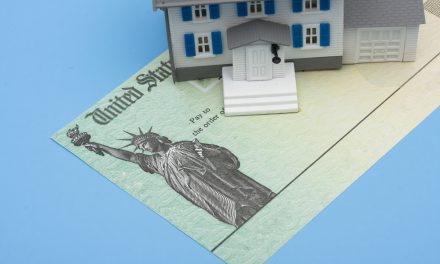Homeowners and renters continue their gradual recovery from the historic job losses of 2020. But for many, the ability to make their housing payments remains out of reach.
In March 2021, 7.7% of U.S. non-subsidized rental households were one or more payments behind on rent, according to the Mortgage Bankers Association (MBA).
While this is still higher than a typical month, the share of renters with missed payments has declined fairly steadily since peaking at 11.1% in April 2020.
Throughout the pandemic and recession, roughly one-in-four rental households have missed a payment, with the majority able to catch up within the one-to-three months following the first missed payment. For homeowners, one-in-seven — or 14% — have missed payments at some point during the 2020-2021 recession.

As seen in the chart above, many households with missed payments since April 2020 – 5.6% of mortgaged homeowners and 10.7% of renters – were able to catch up and resume payments within the following month. The share of households falling behind by two or more payments is 7% for mortgaged homeowners and 9% for renters. The further behind a household becomes on payments, the less likely they will be able to resume their payment schedule.
As of March 2021, 4.9% of U.S. mortgaged homeowners were behind on their mortgage payments. Like missed rental payments, this share has declined from the peak of 9.8% in May 2020. Still, this 4.9% share translates to 2.3 million homeowners who missed a payment in March 2021 alone.
Notably, while millions of households continue to fall behind on their housing debts, many are doing so with the blessing of their collectors. In fact, 10% of renters who were behind on their rent in March 2021 were working with their landlords to come to a solution on how they might pay back any missed payments. Other renters behind on their payments are able to remain in their housing due to the federal eviction moratorium.
Further, 4.2% of mortgaged homeowners are in a forbearance plan as of May 2021. Under a forbearance program, the mortgage servicer agrees to temporarily wave their rights to foreclosure while the homeowner attempts to resuscitate their finances and resume payments.
But the clock is ticking as we make our way through 2021. The graces extended to financially distressed households are quickly winding to an end.
There’s still time for jobless households
The federal foreclosure and eviction moratoriums have sheltered jobless Californians for over a year. However, the moratoriums are scheduled to end on June 30, 2021.
When the moratorium expires, any renter unable to pay rent and without a plan in place with their landlord will find themselves the recipients of a Three-Day-Notice-to-Perform followed by an unlawful detainer (UD) action. In short, they will be evicted. [See RPI Form 576; 576-1]
Editor’s note — Some local protections exist to keep tenants housed after the federal eviction moratorium expires, but these vary by metro area. Read more here.
For homeowners still unable to make payments, those who are not in good standing in a forbearance program will begin the foreclosure process.
firsttuesday forecasts foreclosures and vacancies will begin to impact the housing market in the latter half of 2021. Rental vacancies will rise first, since the eviction process is quicker for rentals. Then, foreclosures will begin to make their way through the pipeline, beginning to build up around the end of the year. Of course, this all assumes the moratorium does in fact expire when it is currently scheduled, and if it is extended yet again, this timeline will also be pushed back.
But, even after the moratoriums end, there are some safety nets still in place.
In California, landlords who work to keep financially distressed tenants housed after the moratorium ends have the option to receive government funds to cover missed payments. Under SB 91, landlords who forgive 20% of their tenants missed rent payments accrued between April 1, 2020 and March 31, 2021 will receive the remaining 80% of missed payments from the government. Further, California’s governor recently announced his intention to extend this to the full 100% amount, as long as landlords do not evict these tenants.
For homeowners still unable to make their mortgage payments, there is still time for them to enter a forbearance program and avoid immediate foreclosure while they attempt to regain income and repair their balance sheets.
Clients seeking to enter a forbearance program may wish to speak to a HUD-approved housing counselor. They may find a counselor by visiting the Consumer Financial Protection Bureau (CFPB) website or calling them directly at (855) 411-CFPB (2372).
Related article:




















YEAH and our dear politicians approved CA Covid Rent Relief and many people have applied, nothing has yet been received by the landlords. Was this FAKE NEWS or a mirage, same as the CA Relief Grant which also never got anywhere, same as the management of the EDD (many people waiting for months for their benefits). Perhaps our Governor should be recalled.